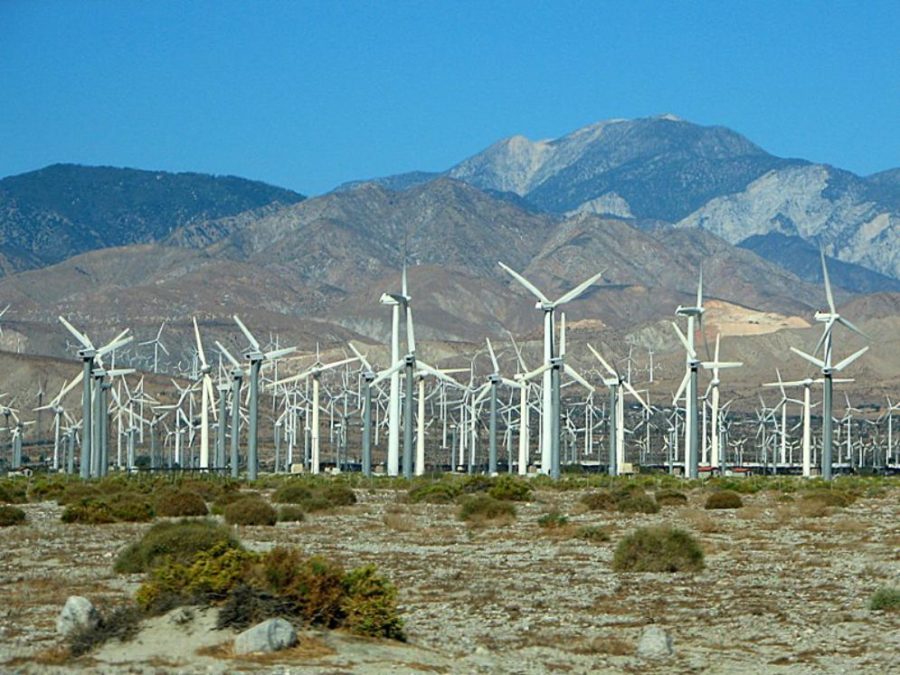Why the Windmills: On Wind Energy
On a road trip to Palm Desert, it’s easy to spot wind farms planted among California’s chaparral landscape.
June 7, 2022
On a drive to the popular road trip destination of Las Vegas, giant wind turbines are scattered lazily across the barren desert of inland California. They’re not there for roadside tourist attractions; these massive metal blades help contribute to 7.18% of California’s in-state energy generation portfolio (wind energy percentage in 2020, California Energy Commission).
As global climate change exacerbates alarmingly, industrialized nations begin a push towards renewable, non-polluting energy sources. Wind energy is just one of multiple alternative fuel sources available to alleviate the pressure of greenhouse gases. Let’s dive into the generation process, the pros, and the cons of this method of energy production.
Wind energy production stays faithful to its name – wind is the natural fuel source that drives the generator. Large rotor blades are attached to a turbine generator in a shape resembling a large metal fan. The force of the wind pushing and spinning on the rotor blades spins the rotor shaft in the generator. This “movement energy” (kinetic energy) of the wind connects with the turbine generator and is converted into electrical power. Power cables within the stem of the wind turbine transport the generated electricity to a nearby power grid.
There are lots to like about wind energy. For one, wind energy relies on the completely natural force of the wind, making it a superb energy source in topography with high winds (such as the Midwest). That also allows us to efficiently use large expanses of land – like pasturelands or deserts – as grounds for wind energy production. Plus, bar the disposal of rotor blades every twenty or so years, no waste is generated from wind production. “Waste” encompasses carbon emissions as well, and since wind turbines do not emit any carbon byproducts, wind energy reduces the stress of the greenhouse effect on the atmosphere.
Yet, no source of energy is the perfect, infinite solution; wind energy has its own cons as well. Without wind, turbines cannot produce energy, making wind energy inefficient in areas with low wind or on days with still currents. The massive turbines also effect a sort of noise pollution – that is, regular exposure to elevated noise levels, which can be adverse towards nearby animals and humans. In addition, native birds and bats have difficulty identifying the spinning rotor blades and sometimes run into the turbines, opening up a threat for native flying animals.
Mrs. Pilkenton (S), Yorba Linda High School’s AP Environmental Science teacher, stands behind the numerous environmental benefits of wind energy and proposes a solution that could prevent wind turbines from accidentally killing birds. “Painting one of the blades black would make it so much easier for birds to see the turbines,” she says. “And, even so, the percentage of bird deaths caused by wind turbines is miniscule compared to other hazards, like power line electrocution, pesticides, automobiles – even cats!”
With vast expanses of land stretching across the California inland and throughout the southwest, the power of wind farms to harness the wind could be a game changer for the environment and the struggle against climate change.






































